Project
Event Report
The 19th Symposium on Disaster Mitigation for Historical Cities was held in hybrid. 219 people from all over Japan and abroad participated in this symposium, which consists of 39 research presentations on disaster mitigation for historical cities and cultural heritage sites.
The symposium covering a broad range of topics was composed of 9 sessions, as follows: Disaster Prevention Technology (1)-(2), Building and history, community and awareness, Flood damage (1)-(2), Earthquake, Fire, Community development and evacuation. The symposium was fruitfully completed through vigorous discussions of all the participants.
The special session was titled “Special Session among Local Governments from China, Japan, and Korea on the Restoration and Disaster
Reduction of Damaged Cultural Properties and Historic Cities” and was jointly organized by the Trilateral Cooperation Secretariat.
The moderator was Professor Takeyuki Okubo (College of Science and Engineering, Ritsumeikan University), and the speakers were Mr. Hitoshi Harada (Cultural Heritage Division, Ishikawa Prefectural Board of Education) from Japan, Mr. Ren Tao (Xi’an City Earthquake Office) from China, and Dr. Kim Hyung-suk (Foundation of Silla Cultural Heritage Research Institute) from Korea (Gyeongju City).
Ms. Daria Mokhnacheva from the United Nations Office for Disaster Risk Reduction (UNDRR) moderated a workshop on evaluation indicators for institutional approaches to cultural heritage disaster reduction.
Through this session, we were able to share the unique institutional approaches and universal challenges of each of the three countries and deepen our discussion on the possibility of further academic cooperation.
The research presentations at the symposium were published in the journal of Disaster Mitigation in Cultural Heritage and Historical Cities, Vol. 19.
We really appreciate your great contributions and cooperation for the symposium in this year.






The 18th Symposium on Disaster Mitigation for Historical Cities was held in hybrid. 93 people from all over Japan and abroad participated in this symposium, which consists of 28 research presentations on disaster mitigation for historical cities and cultural heritage sites.
The symposium covering a broad range of topics was composed of 9 sessions, as follows: Disaster Prevention Technology (1)-(2), Space and environment, Flood damage and flood control, Consensus building and risk management, Maintenance and reinforcement, Disaster prevention planning (1)-(3). The symposium was fruitfully completed through vigorous discussions of all the participants.
Before the sessions, Professor Osamu OBA, Kinugasa Research Organization, Ritsumeikan University gave a speech entitled “The History of Folk Houses with Preparedness and Composition: Exploring Mizuya and Taka”. In this lecture, he introduced “mizuya” and “taka” in private houses in flood-prone areas, and explained that they are not only “preparedness” for evacuation in the event of flooding, but also “composition” as a form of housing for appealing to visitors and for supporting to the local community, and that depending on the region, there are cases where only the landowner layer has the privilege, and there are cases where it has equality that is not limited to the landowner layer. He talked about the position of mizuya and taka in the history of private houses.
The research presentations at the symposium were published in the journal of Disaster Mitigation in Cultural Heritage and Historical Cities, Vol. 18.
We really appreciate your great contributions and cooperation for the symposium in this year.
The 17th Symposium on Disaster Mitigation for Historical Cities was held in hybrid. 179 people from all over Japan and abroad participated in this symposium, which consists of 33 research presentations on disaster mitigation for historical cities and cultural heritage sites.
The symposium covering a broad range of topics was composed of 9 sessions, as follows: Disaster Prevention Technology1-2, International Collaboration, Flood/Landslide Disaster1-2, Disaster Prevention Plan1-4. The symposium was fruitfully completed through vigorous discussions of all the participants.
Before the sessions, Professor Ryoichi Fukagawa, College of Science and Technology, Ritsumeikan University gave a speech entitled “20 years history of the Geo-Hazards Group at the Institute of Disaster Mitigation for Urban Cultural Heritage, Ritsumeikan University” and looked back the Institute’s 20th anniversary. Mr. Daisuke Fujii, Cultural Properties Division, Administration Department, Kagoshima City Board of Education, gave a special lecture which was collaboration with Ritsumeikan Doyo-koza entitled “Progress of Recovery and Repair from Disaster at the Terayama Charcoal Kiln”. In this lecture, there was a detailed report on the fact that part of the remains of a charcoal kiln, which is a component of the World Cultural Heritage Site, collapsed due to heavy rain and was washed away by sediment from the slope behind it. While the subsequent countermeasures and investigations during the restoration revealed new facts that we had never known before, the collapse occurred again after the repair, and we received an important topic that made us think again about the difficulty of balancing accurate recovery and restoration with preventive disaster prevention.
The research presentations at the symposium were published in the journal of Disaster Mitigation in Cultural Heritage and Historical Cities, Vol. 17.
We really appreciate your great contributions and cooperation for the symposium in this year.
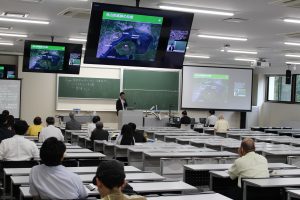
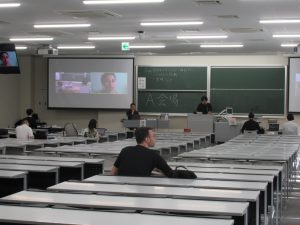
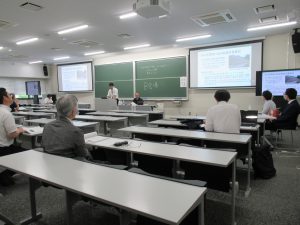
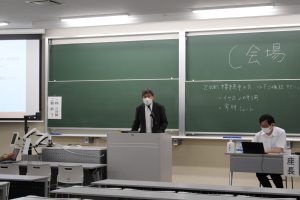
The 16th Symposium on Disaster Mitigation of Cultural Heritage and Historical Cities was held online on Zoom under this COVID-19 situation. 150 people from all over Japan and abroad participated in this symposium, which consists of 26 research presentations on disaster mitigation for historical cities and cultural heritage sites.
The symposium covering a broad range of topics was composed of 9 sessions, as follows: Earthquake Disaster, Flood, Architectural Plan, Fire, Disaster Risk1-2, Disaster Plan1-2, Database. The symposium was fruitfully completed through vigorous discussions of all the participants.
Before the sessions, Professor Emeritus Yoshihiro UEMURA, Bukkyo University, gave a special lecture entitled “The Remains of Yuwang in Japan as Disaster Heritage and their significance”. This lecture addressed Yuwang as a hero of flood control, enshrined Yuwang as a flood control god, and various remains of Yuwang’s monuments as memorials of flood control and land development in Japan, and he talked about the significance of preserving these as disaster related cultural heritages and contributing to education for disaster mitigation in the region.
The research presentations at the symposium were published in the Journal of Disaster Mitigation for Historical Cities, Vol. 16.
We really appreciate your great contributions and cooperation for the challenging symposium in this year.
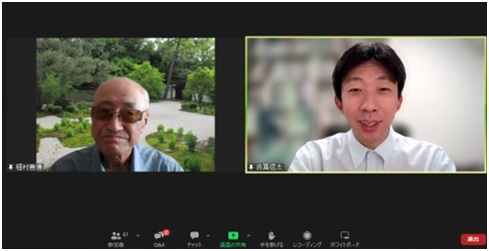
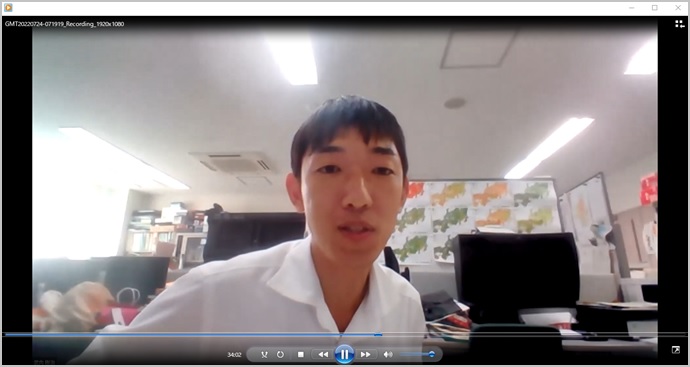
The 15th Symposium on Disaster Mitigation for Historical Cities was held online on Zoom under this COVID-19 situation. 150 people from all over Japan and abroad participated in this symposium, which consists of 44 research presentations on disaster mitigation for historical cities and cultural heritage sites.
The symposium covering a broad range of topics was composed of 9 sessions, as follows: 3 for disaster mitigation technology, 4 for disaster prevention plans and 2 for International collaborations. The symposium was fruitfully completed through vigorous discussions of all the participants.
Before the sessions, Professor Yoshiteru MUROSAKI, who is Dean Graduate School of Disaster Resilience and Governance, University of Hyogo gave a special lecture entitled “Disaster Reconstruction of Historical Cities”. This lecture addressed differences in the values of cultural heritage between Japan and other countries, especially between the cultural areas of stone and wooden architecture, and future issues and prospects for the disaster resilience of cultural heritage.
The research presentations at the symposium were published in the Journal of Disaster Mitigation for Historical Cities, Vol. 15.
We really appreciate your great contributions and cooperation for the challenging symposium in this year.
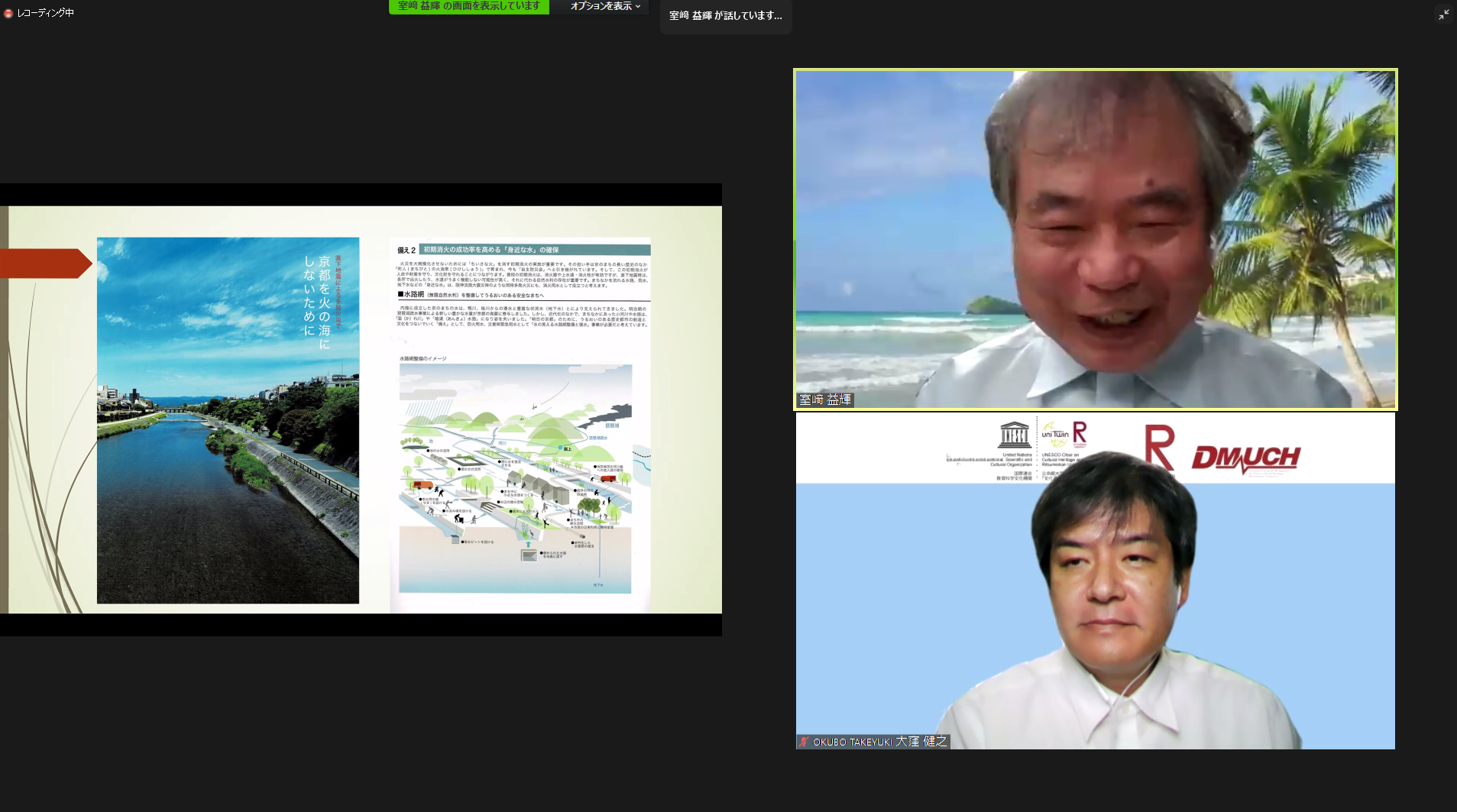
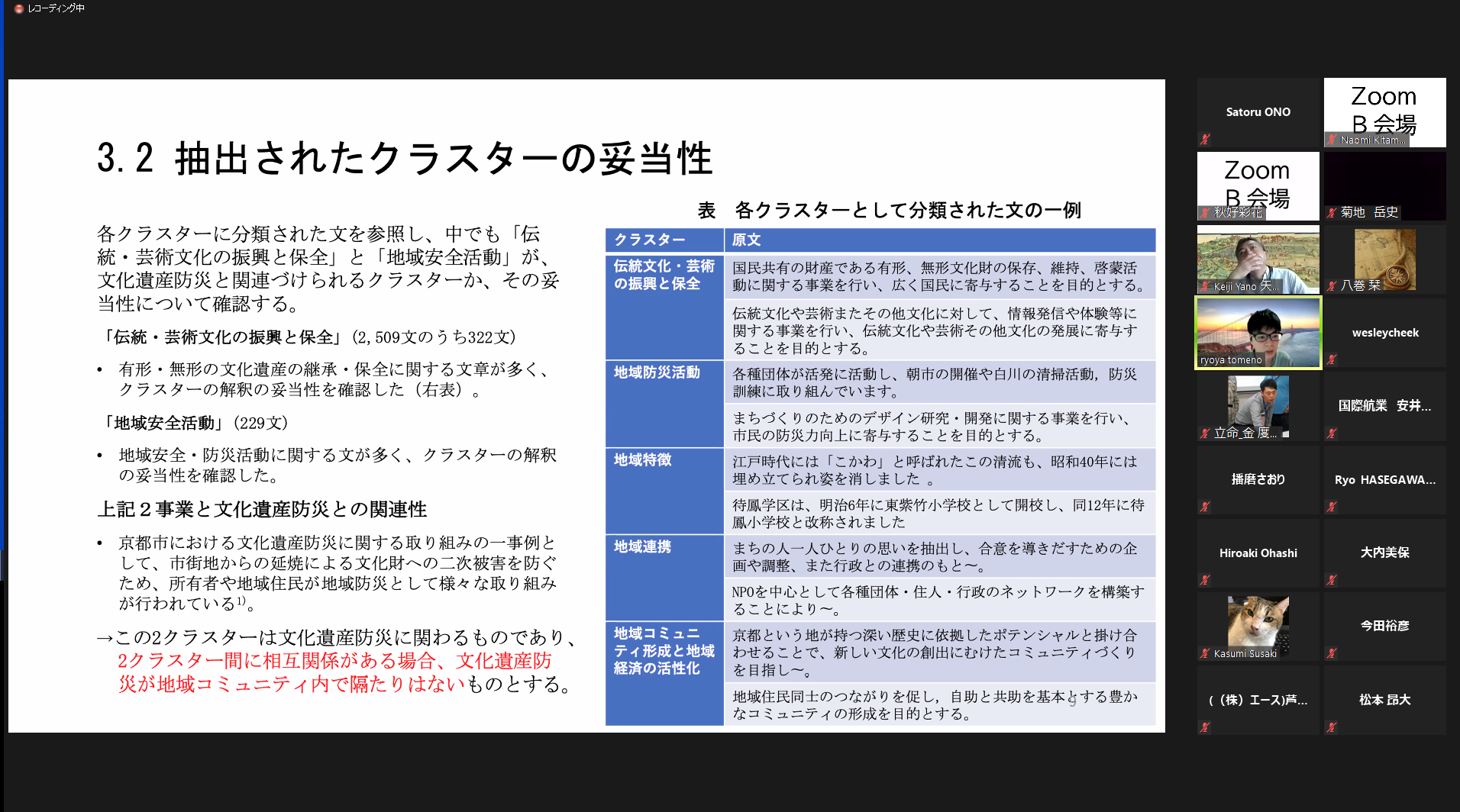
The 14th Symposium on Disaster Mitigation for Historical Cities was held online on ZOOM under this COVID-19 situation.104 people from all over Japan and abroad participated in this symposium, which consists of 35 research presentations on disaster mitigation for historical cities and cultural heritage sites.
The symposium covering a broad range of topics was composed of 9 sessions, as follows: 3 for disaster mitigation technology, 1 for historical disasters, and 5 for disaster prevention planning. The symposium was fruitfully completed through vigorous discussions of all the participants.
Before the sessions, Dr. Kanefusa Masuda, who is Visiting Researcher, Kinugasa Research Organization, Ritsumeikan University, gave a special lecture entitled “The Disaster Resilience of Cultural Heritage: Disaster Recovery and Values”. This lecture addressed differences in the values of cultural heritage between Japan and other countries, especially between the cultural areas of stone and wooden architecture, and future issues and prospects for the disaster resilience of cultural heritage.
The research presentations at the symposium were published in the Journal of Disaster Mitigation in Cultural Heritage and Historical Cities, Vol. 14.
We really appreciate your great contributions and cooperation for the challenging symposium in this year.
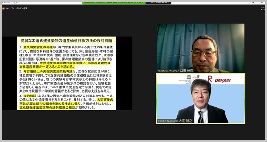
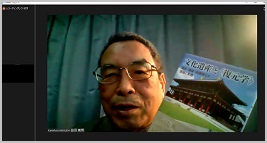
The 13th Symposium on Disaster Mitigation for Historical Cities was held at the Ritsumeikan University Kinugasa Campus. Approximately 110 people from all over Japan participated, and there were 34 research presentations on disaster mitigation for historical cities and cultural heritage sites, along with lively debate.
Sessions covered a broad range of topics: disaster mitigation technology, disaster prevention plan, historical disasters, geography and evacuation, local community.
After the sessions, Dr. Ryoichi Fukagawa, who belongs to College of Science and Engineering, Ritsumeikan University, gave a lecture on “Looking back to the achievement of the Geohazards Research Group on 21st Century COE program”.
As looking back to the time when the Ritsumeikan University’s group on Disaster Mitigation for Historical Cities was selected as one of MEXT’s 21st Century COE programs, he summarized the remarkable achievement of the study of the Geohazards Research Group as well as he gave a lecture on its future issues and prospects.
The research findings presented at the symposium were published in Disaster Mitigation in Cultural Heritage and Historical Cities, Vol.13.


The 12th Symposium on Disaster Mitigation for Historical Cities was held at Ritsumeikan University Kinugasa Campus. Approximately 110 people from all over Japan participated, and there were 36 research presentations on disaster mitigation for historical cities and cultural heritage sites, along with lively debate.
Sessions covered a broad range of topics: disaster mitigation technology, history and geography, tourists, fire disaster and fire protection, disaster prevention plan.
After the sessions, Dr. Katsuya Yamori, who belongs to Disaster Prevention Research Institute in Kyoto University, gave a lecture on “A Remarkable Style of Disaster and Community Management in Kuroshio Town, Kochi Prefecture, Proposed in Quotable Slogans”. In the lecture, he discussed a remarkable style of disaster and community management of Kuroshio Town in Kochi Prefecture, where the highest tsunami had estimated in Japan due to the Great East Japan Earthquake in the year of 2011, by quoating words from its residents.
The research findings presented at the symposium were published in Disaster Mitigation in Cultural Heritage and Historical Cities, Vol. 12.
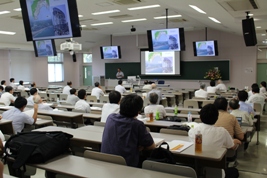
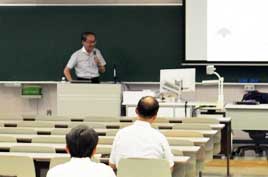
The 11th Symposium on Disaster Mitigation for Historical Cities was held at the Ritsumeikan University Kinugasa Campus. Approximately 120 people from all over Japan participated, and there were 35 research presentations on disaster mitigation for historical cities and cultural heritage sites, along with lively debate. Sessions covered a broad range of topics: historical disasters, disaster mitigation for cultural heritage, earthquake, earthquake-proof, disaster mitigation technology, local disaster and disaster prevention planning. After the sessions, Dr. Itoko KITAHARA, who is a Visiting Researcher of R-DMUCH, gave a lecture on “Disasters and Castle Construction”.
The research findings presented at the symposium were published in Disaster Mitigation in Cultural Heritage and Historical Cities, Vol. 11.
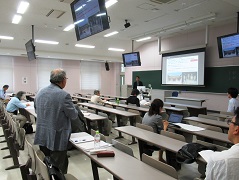
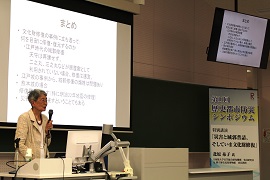
The 10th Symposium on Disaster Mitigation for Cultural Heritage and Historical Cities was held at the Kinugasa Campus, Ritsumeikan University. Approximately 105 people from all over Japan participated in the symposium, where 28 research presentations on disaster mitigation for historical cities and cultural heritage sites were given along with lively debate.
The sessions covered a broad range of topics including disaster mitigation technology, fire disaster/fire control, disaster prevention planning, history and disaster mitigation, and transportation/evacuation.
After the session, Prof. Kenzo Toki, Institute of Disaster Mitigation for Urban Cultural Heritage gave a special presentation titled “The 10 years History of Research Center for Disaster Mitigation of Urban Cultural Heritage” and many participants listened attentively to his presentation relevant to this 10 years progress in research activities including outcomes which have been highly evaluated by the international organization. In addition, the first special session titled “Assessment Methods of Disaster Risk Management Capabilities in Wooden Heritage” was provided by Mr. LEE Myung-Sun, Cultural Heritage Administration of Korea, followed by the second special session titled “The Current Research of Safety Management and Disaster Prevention of Cultural Heritage in Korea and the Future Challenge” was provided by Mr. JO Sang-Sun, National Research Institute of Cultural Heritage, which were valuable opportunities in order to deeply understand the present of cultural heritage in South Korea.
The research findings presented at the symposium were published in Disaster Mitigation in Cultural Heritage and Historical Cities, Vol. 10.
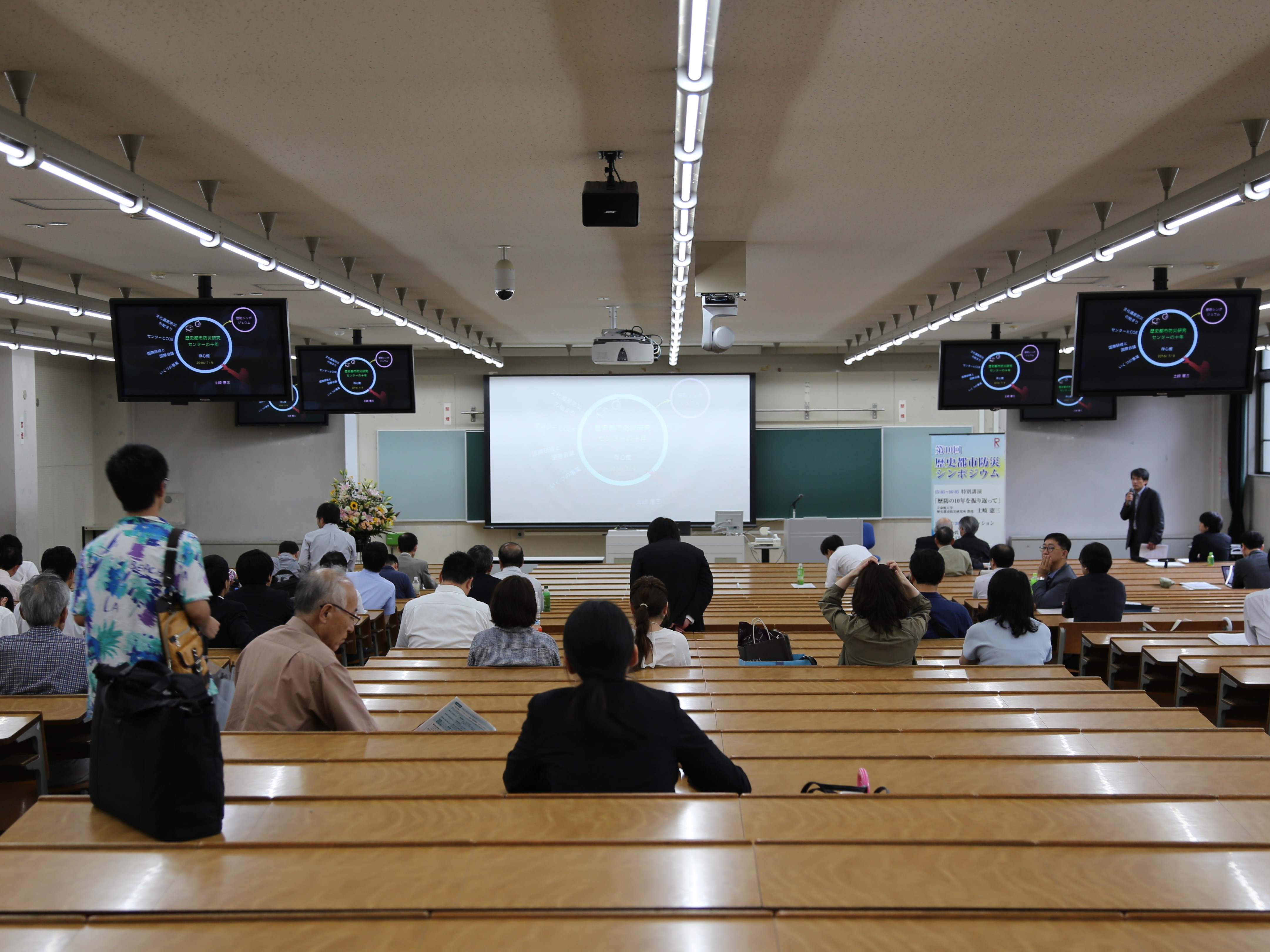
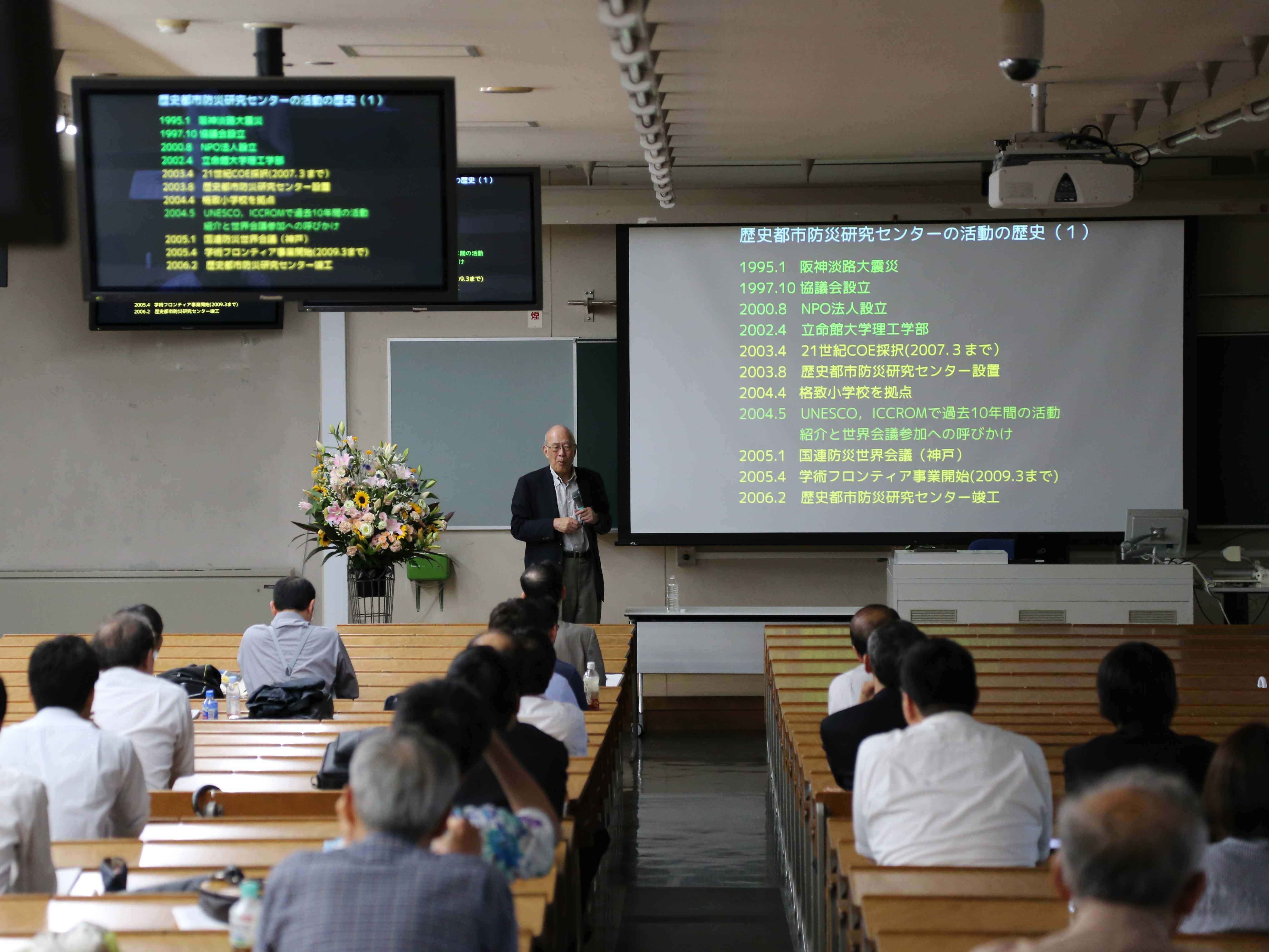
The 9th Symposium on Disaster Mitigation for Historical Cities was held at the Ritsumeikan University Kinugasa Campus. Approximately 140 people from all over Japan participated, and there were 39 research presentations on disaster mitigation for historical cities and cultural heritage sites, along with lively debate.
Sessions covered a broad range of topics: landslide disaster, fire, fire prevention, geography and history, earthquake, earthquake-proof, tourists, local disaster and disaster prevention planning.
After the sessions, Professor Takeyuki Okubo, Director of Institute of Disaster Mitigation for Urban Cultural Heritage, Ritsumeikan University, gave a lecture on “The Damage Condition of Cultural Heritage and Historical City after the Gorkha Earthquake, Nepal”.
The research findings presented at the symposium were published in Disaster Mitigation in Cultural Heritage and Historical Cities, Vol. 9.
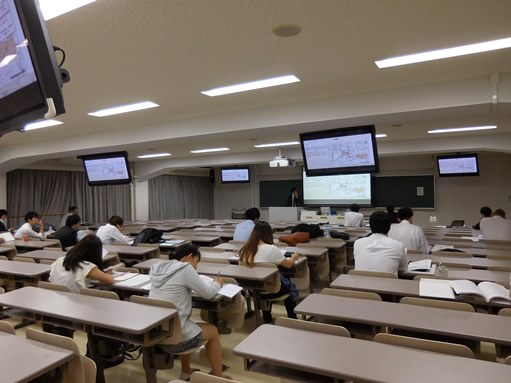
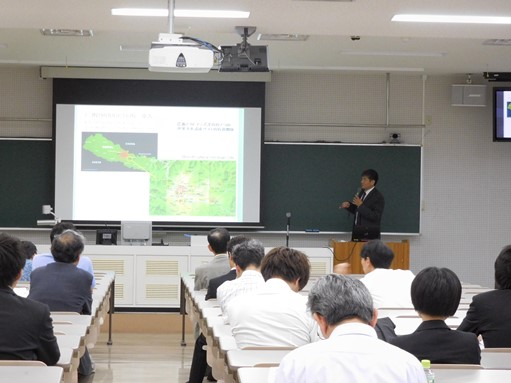
The 8th Symposium on Disaster Mitigation for Historical Cities was held at the Ritsumeikan University Kinugasa Campus. Approximately 117 people from all over Japan participated, and there were 44 research presentations on disaster mitigation for historical cities and cultural heritage sites, along with lively debate.
Sessions covered a broad range of topics: wooden buildings, traditional structures, disaster investigation, disaster mitigation for cultural property, flood damage, landslide disaster, local disaster mitigation, evacuation / traffic and urban space. After the sessions, Professor Masanori Hamada, Chairman of Asian Disaster Reduction Center (ADRC) and Emeritus Professor of Waseda University, gave a lecture on “Resilience of Costal Regions Industrial Facilities”.
The research findings presented at the symposium were published in Disaster Mitigation in Cultural Heritage and Historical Cities, Vol. 8.
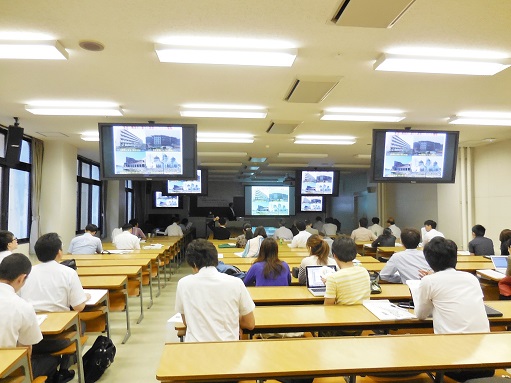
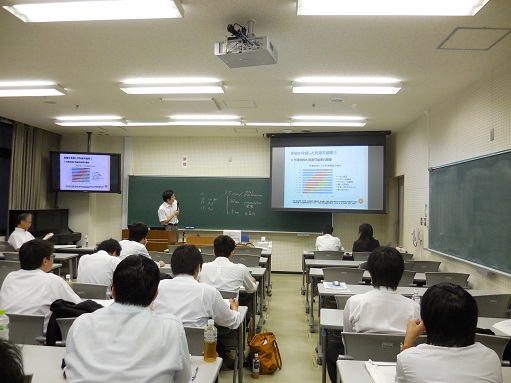
The 7th Symposium on Disaster Mitigation for Historical Cities was held at the Ritsumeikan University Kinugasa Campus. Approximately 150 people from all over Japan participated, and there were 52 research presentations on disaster mitigation for historical cities and cultural heritage sites, along with lively debate.
Sessions covered a broad range of topics: evacuations, landslide disasters, flood damage/avalanches, wooden structured buildings, earthquakes, disaster mitigation/fires, risk assessment, community based disaster mitigation, and disaster mitigation planning.
The research findings presented at the symposium were published in Disaster Mitigation in Cultural Heritage and Historical Cities, Vol. 7.
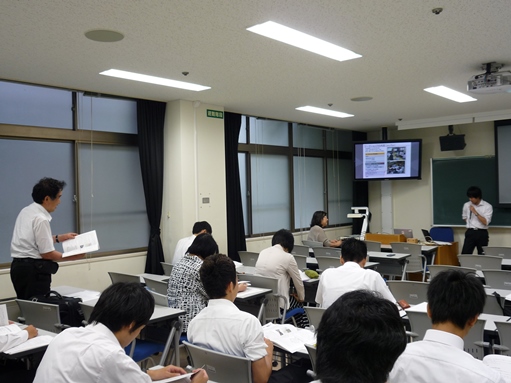
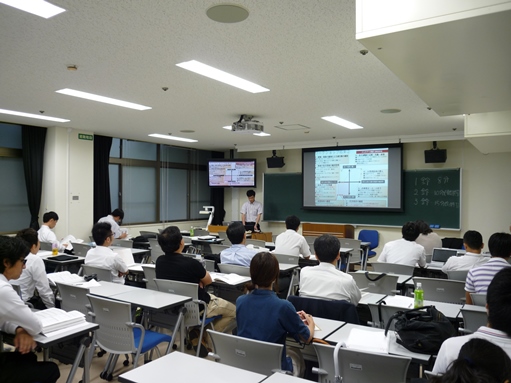
The 6th Symposium on Disaster Mitigation of Cultural Heritage and Historical Cities was held in Kyoto, and 160 persons participated in it. A total of 52 papers and reports were presented at the symposium related to disaster mitigation issues concerning historical cities and/or cultural heritages.
The research findings presented at the conference have been published as Disaster Mitigation of Cultural Heritage and Historical Cities, Vol. 6.
- The 5th Symposiume on Disaster Mitigation of Cultural Heritage and Historical Cities was held at Ritsumeikan University’s Biwako-Kusatsu Campus. A total of 47 research presentations on disaster mitigation of urban cultural heritage and cultural assets were given, followed by lively discussion; more than 120 persons participated from all over Japan. The sessions covered a wide variety of topics, including disaster mitigation in urban area, social systems, emergency evacuation behavior, historical assets, fires, fire fighting, disaster mitigation technologies, earthquake resistance, the Great East Japan Earthquake, disaster damage, case studies from overseas, and slope disaster mitigation. The next conference is scheduled for July 2012.The research findings presented at the conference have been published as Disaster Mitigation of Cultural Heritage and Historical Cities, Vol. 5.
The 4th Symposium on Disaster Mitigation of Cultural Heritage and Historical Cities was held at Ritsumeikan University’s Kinugasa Campus. A total of 45 research presentations on disaster mitigation of historic cities and cultural heritage were given, followed by lively discussion. More than 200 persons participated from all over Japan, showing the high level of interest in disaster mitigation of cultural heritage and historic cities. We will hold a conference on a similar theme again in July next year.
The research findings presented at the conference have been published as Disaster Mitigation of Cultural Heritage and Historical Cities, Vol. 4.

The 3rd Symposium on Disaster Mitigation of Cultural Heritage and Historical Cities was held with the cooperation of Higashi Hongan-ji Temple. 41 presentations on disaster mitigation of cultural heritage and historic cities were given by people who had gathered from all across Japan, followed by lively discussion and debate. Over 200 people attended, including non-academics, an indication of the high level of interest there is in disaster protection of cultural heritage. A conference on the same theme is scheduled for June 2010.

The research findings presented at the conference have been published in Disaster Mitigation of Cultural Heritage and Historical Cities, Vol. 3.
Conference homepage: http://www.ritsumei.jp/pickup/detail_j/topics/3715/date/6/year/2009/
The 2nd Symposium on Disaster Mitigation of Cultural Heritage and Historical Cities was held on October 4, 2008 at Shigaku-kan Hall, Ritsumeikan University (Kinugasa Campus). 25 presentations on disaster mitigation of cultural heritage and historical cities were given, followed by lively discussion. In the debate session, there was a panel discussion about the centerpiece of the G-COE program, the Disaster Countermeasures Package; its frameworks and contents among Professor Takeyuki OKUBO (the G-COE program leader) and representative members from each Project Groups and the Education Review Committee. The total of 64 people attended the Conference including people not from Ritsumeikan University, which demonstrates a high level of interest in disaster mitigation of historical cities.

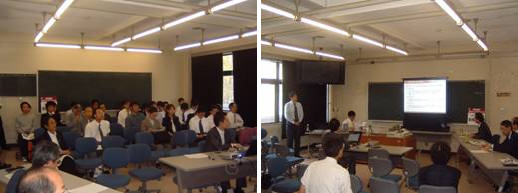
The papers presented have been published in our journal Disaster Mitigation of Cultural Heritage and Historical Cities, Vol. 2.
The 1st Symposium on Disaster Mitigation of Cultural Heritage and Historical Cities was held at Ritsumeikan University, on the Kinugasa Campus. 49 presentations were made of papers submitted from researchers across Japan, and over 200 people attended. After the presentations Yoshiyuki SUZUKI (professor, Disaster Prevention Research Institute, Kyoto University) gave a special lecture titled “Preventing Traditional Buildings from Earthquake Damage.” The lecture included a detailed explanation of the tests for seismic performance and seismic strengthening being carried out on traditional wooden buildings, including the tests for earthquake resistance carried out on Kyo machi-ya [traditional merchant houses of Kyoto], at the world’s largest earthquake testing system at the Hyogo Earthquake Engineering Research Center in Miki city in Hyogo Prefecture.
The research findings presented at the conference have been published in Disaster Mitigation of Cultural Heritage and Historical Cities, Vol. 1.





